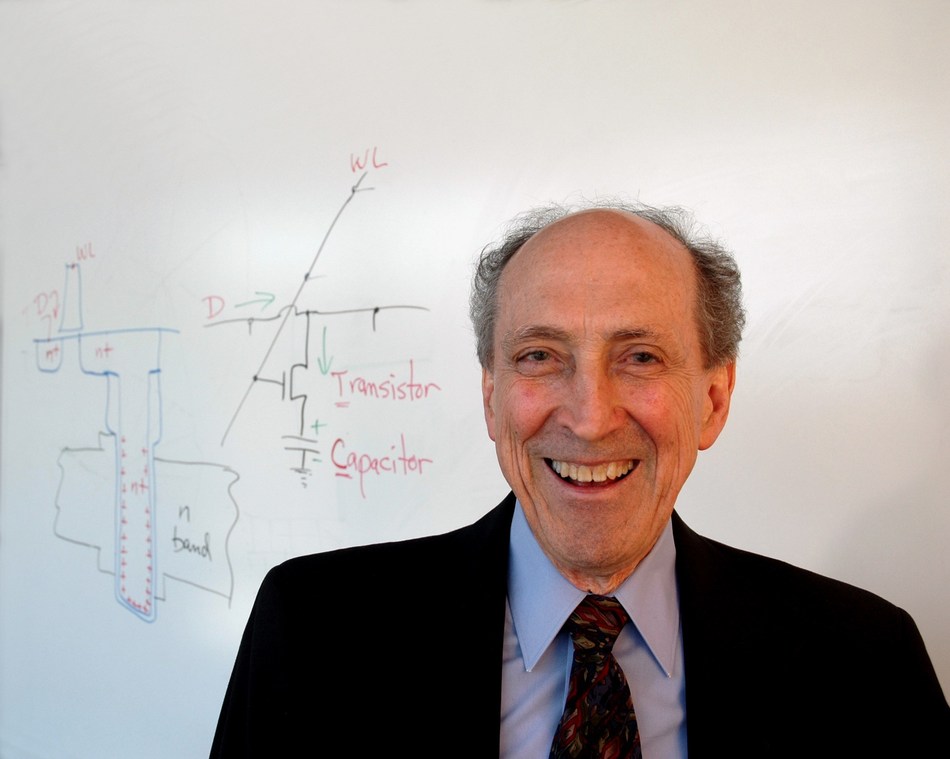The Semiconductor Industry Association (SIA) today announced Dr. Robert H. Dennard, pioneer of transformational breakthroughs in semiconductor technology and IBM Fellow Emeritus, has been named the 2019 recipient of SIA’s highest honor, the Robert N. Noyce Award. SIA presents the Noyce Award annually in recognition of a leader who has made outstanding contributions to the semiconductor industry in technology or public policy. Dennard will accept the award at the SIA Award Dinner on Thursday, Nov. 7, 2019 in San Jose. SIA represents U.S. leadership in semiconductor manufacturing, design, and research.

“Dr. Dennard is a semiconductor industry icon, inventing the memory technology underpinning every computer, smartphone, tablet, and other electronic devices that are so ubiquitous in modern society,” said John Neuffer, SIA president and CEO. “Bob also pioneered the scaling physics that have allowed the semiconductor industry to produce exponentially more advanced products at lower cost. Bob’s contributions have revolutionized our industry and transformed modern technology for the better. On behalf of the SIA board of directors, it is my pleasure to announce Bob as the 2019 Robert N. Noyce Award recipient in recognition of his outstanding achievements.”
Dennard invented the Dynamic Random Access Memory (DRAM) cell in 1966. The ultimate effect of Dennard’s invention is that a single chip can hold 16 billion bits, or 16 gigabits, of RAM in today’s smartphones. He was granted a patent for his one-transistor DRAM in 1968. By the mid-1970s, DRAM was standard in virtually all computers. For the invention of the basic one-transistor dynamic memory cell, Dennard was awarded the National Medal of Technology in 1988.
Dennard also led the development of metal-oxide-semiconductor field-effect transistors (MOSFET) scaling rules. He and his associates were among the first to recognize the tremendous potential of downsizing MOSFETs, showing that integrated circuits would perform faster with much lower energy consumption as transistors, wires, and circuit voltage were made smaller. This property underlies Moore’s Law and the evolution of microelectronics over many decades.
Over his career, Dennard’s work has resulted in 75 patents, more than 100 published papers, and numerous awards, including the Kyoto Prize (2013), the Carnegie Mellon University Honorary Doctor of Science and Technology (2010), the IEEE Medal of Honor (2009), the IEEE Edison Medal (2001) and the National Academy of Engineering Charles Stark Draper Prize (2009). He was inducted into the National Inventors Hall of Fame in 1997 and was awarded the Lemelson-MIT Lifetime Achievement Award in 2005.
Dennard earned his B.S. and M.S. degrees in electrical engineering from Southern Methodist University in Dallas. He received his Ph.D. from Carnegie Institute of Technology (now CMU) in 1958 and joined IBM Research soon after. He was appointed an IBM Fellow in 1979.
“It is my honor to accept this award and to join the ranks of its previous recipients, true legends and luminaries in our industry,” said Dennard. “As gratifying as my career’s work has been, I’m most proud of the collaboration and relationships built with people I’ve worked alongside to advance semiconductor technology. I gratefully accept this award with those friends, colleagues, and mentors in mind and look forward to seeing what the future holds for our great industry.”
The Noyce Award is named in honor of semiconductor industry pioneer Robert N. Noyce, co-founder of Fairchild Semiconductor and Intel Corporation.